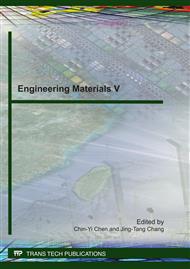p.1
p.8
p.13
p.22
p.27
p.34
p.40
p.48
Microstructure and Mechanical Properties of Molybdenum Alloy Strengthened by Lanthanum Oxide and Silicon
Abstract:
The molybdenum alloy sheets composite strengthened by silicon and lanthanum oxide were prepared by powder metallurgy technology with Mo-La2O3(0.3wt%) and Si(0, 0.1, 0.3wt%) powders and thermo-mechanically processing. The influences of silicon content on the microstructure and mechanical properties of the final molybdenum alloy sheets were tested and analysized. The results show that the addition of lanthanum oxide and silicon can refine the alloys grain size. The introduction of lanthanum oxide particles can increase the yield strength. Although the molybdenum alloys with 0.3wt% silicon have solid solution strengthening effect, the alloys with 0.1 wt% silicon exhibits obvious solid solution softening effect at room temperature. The strengthening mechanisms are quantitatively assessed, which well explain the increase or decrease in yield strength with respect to grain size, lanthanum oxide particle and silicon solid solution.
Info:
Periodical:
Pages:
22-26
Citation:
Online since:
April 2011
Authors:
Keywords:
Price:
Сopyright:
© 2011 Trans Tech Publications Ltd. All Rights Reserved
Share:
Citation:


